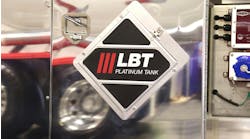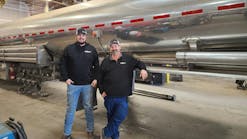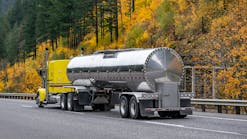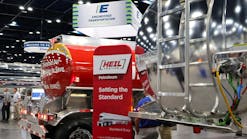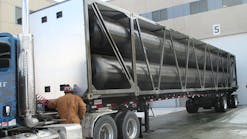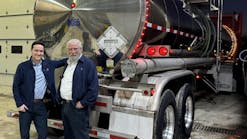CARGO TANK passivation sometimes is seen as an exotic, and even mysterious, activity. It shouldn't be that way.
George Lyon, Texo Corporation, provided a clear and succinct discussion of the passivation process during the National Tank Truck Carriers Tank Cleaning Seminar April 17 and 18 in New Orleans, Louisiana. Most of all, Lyon tried to separate reality from myth.
He explained that passivation makes the surface of a barrel passive so it won't corrode. Every stainless steel cargo tank needs to be passivated, but it can be a simple process performed with a very basic system. Throughout the presentation, Lyon reminded the audience that passivation may be a simple activity, but workers assigned to the job must be well trained.
Workers must understand what passivation does and doesn't do. Most importantly, passivation doesn't clean a dirty tank, and it won't remove corrosion pits that have already formed. On the safety side, workers must be aware of the hazards involved in dealing with a corrosive material, like the nitric acid solutions that are typically used in cargo tank passivation.
Basically, passivation makes the surface of a stainless steel barrel passive so it won't corrode. As the passivating solution circulates in the cargo tank, rust and stains are removed. Later, a chrome oxide layer will form on the tank surface, and that is what protects against corrosion.
Annual Passivation Stainless steel cargo tanks should be passivated at least once a year, according to Lyon. The first passivation should be before the new tank enters service. This will help remove mill spatter, filings, and other contaminants that can contribute to corrosion.
Before the process begins, the barrel should be thoroughly wet down with water to prevent streaking from the passivating solution. It's also important to thoroughly circulate the passivating solution to completely coat the tank walls.
Next, the tank should be buttoned up for 20 to 30 minutes to let the acid work. That is followed by a spinner rinse to neutralize the pH level. Detergent can be used if necessary. The tank needs to dry thoroughly for 24 hours.
The job can be done with a fairly inexpensive system that can be assembled inhouse. Lyon estimated that a passivation system can be assembled for $4,000 to $5,000. The equipment he described is portable. It consists of a 30-gallon plastic tank for the nitric acid solution, Aro one-inch pneumatic diaphragm pump that runs at 20 gallons per minute, and Sellers air-operated RotoJet spinners rated at 10 gallons per minute and 300 to 400 psi.
Spinner nozzles are plastic and should last a long time. Piping and valves also are plastic. "Plastic should be used wherever possible because it is very durable and very resistant to acid," Lyon said.
A 30-gallon plastic tank contains enough nitric acid solution to passivate about 10 tank trailers at a cost of $25 to $30 per trailer. The solution turns green when it is spent.
